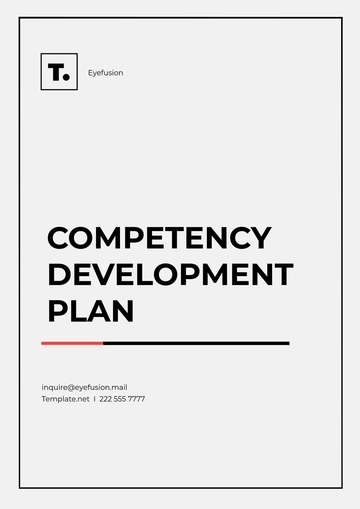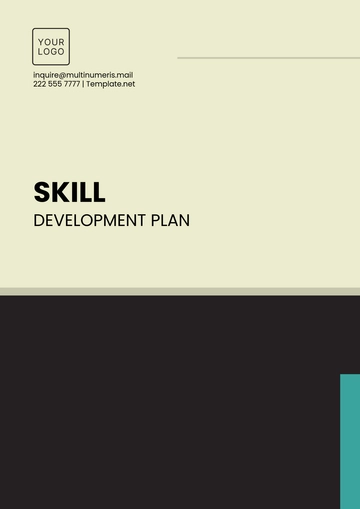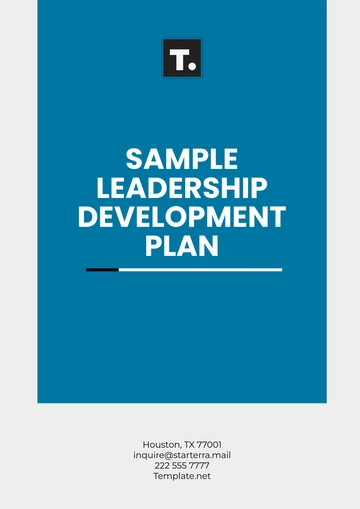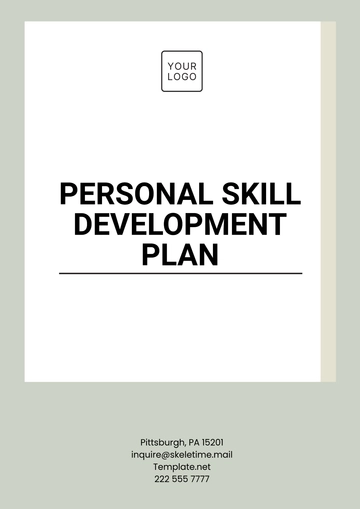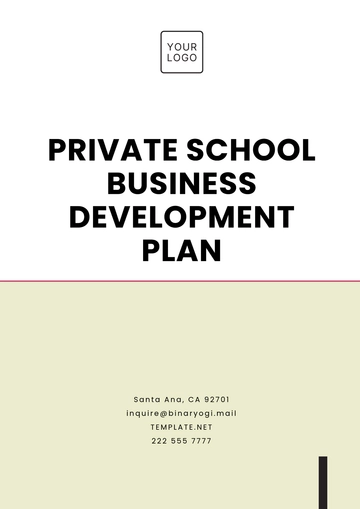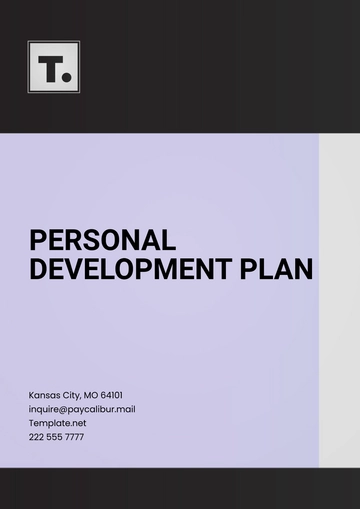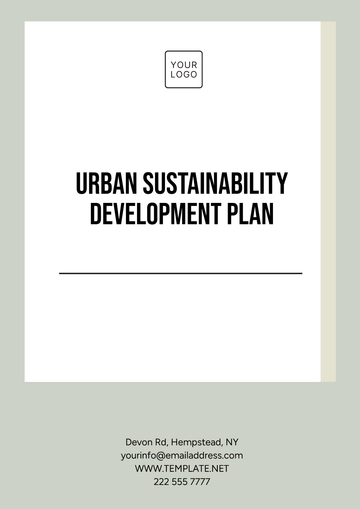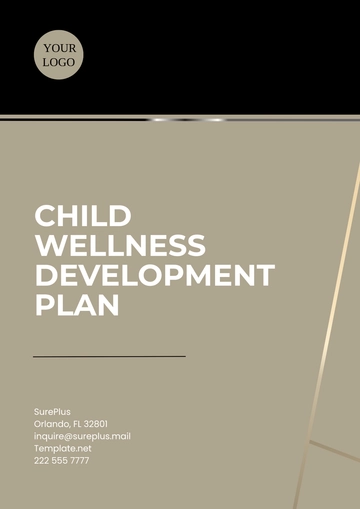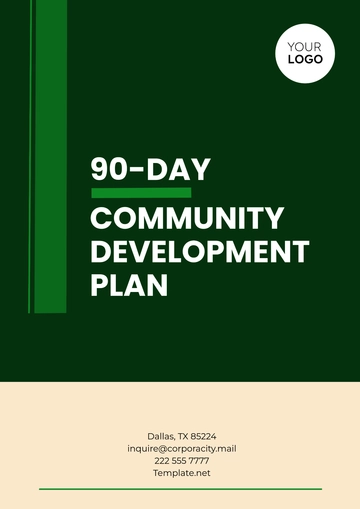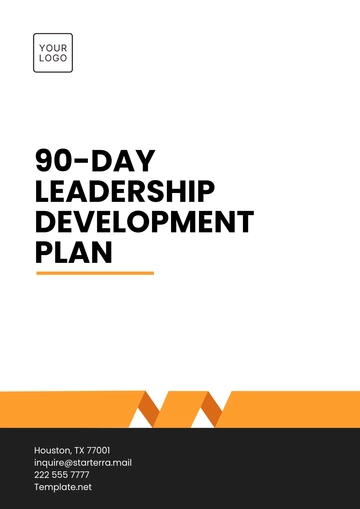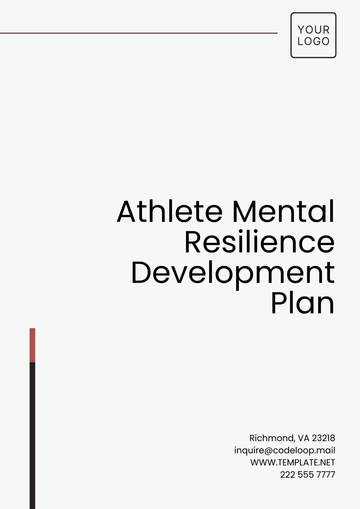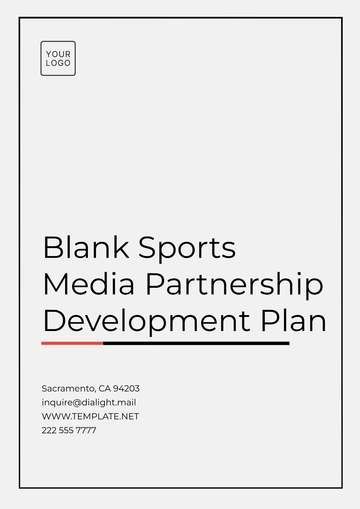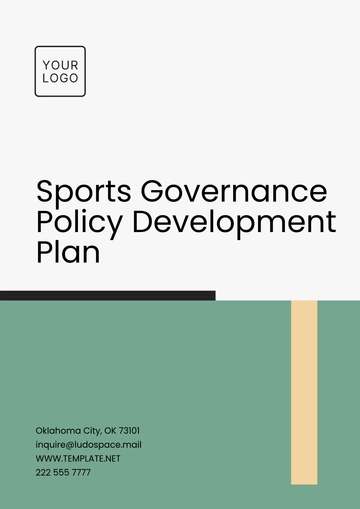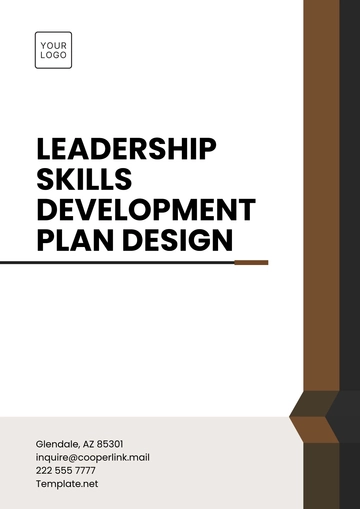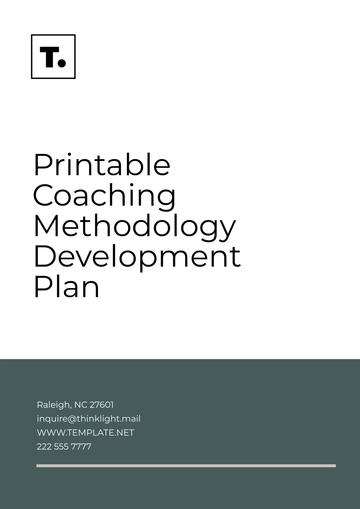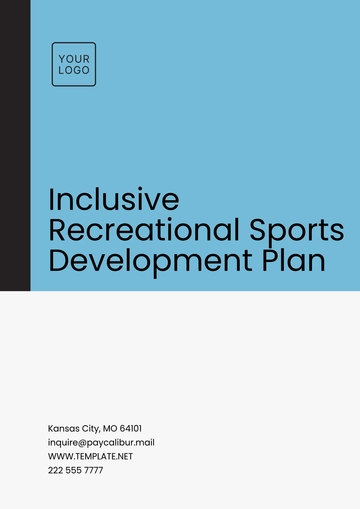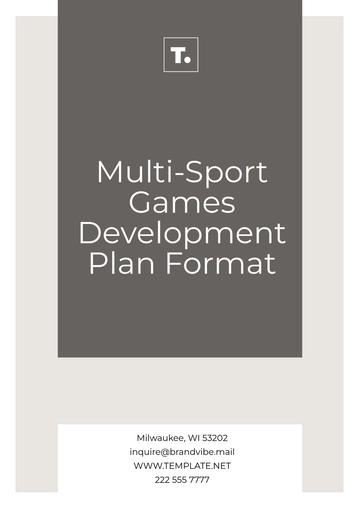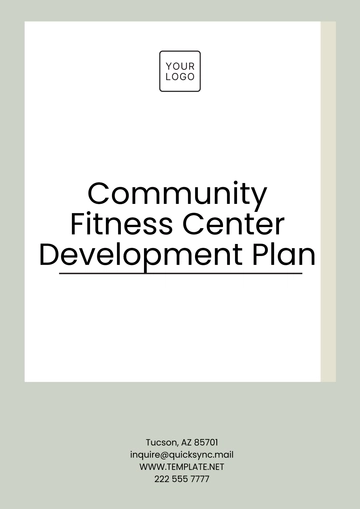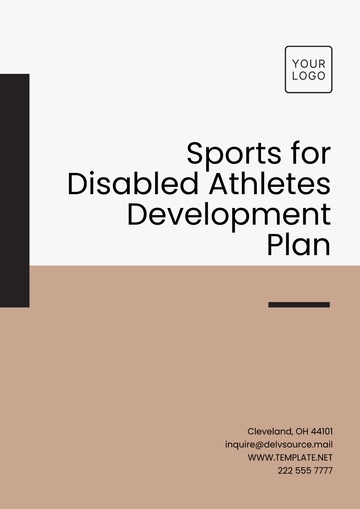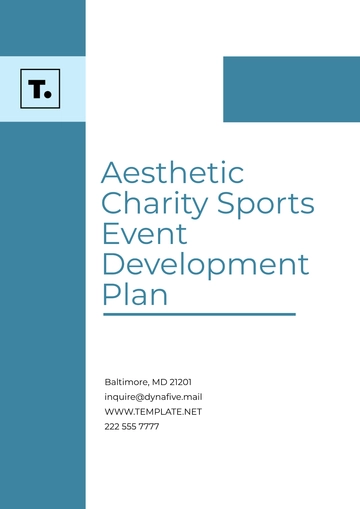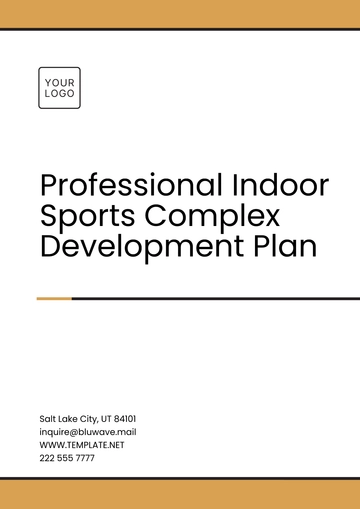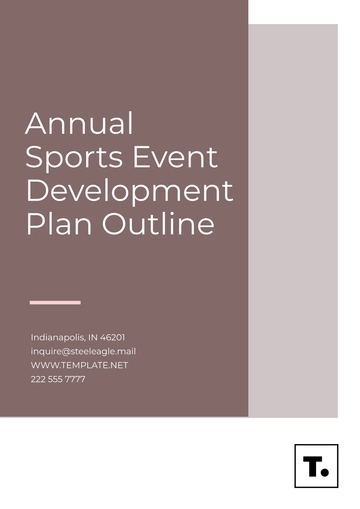Free Nursing Home Training And Development Plan
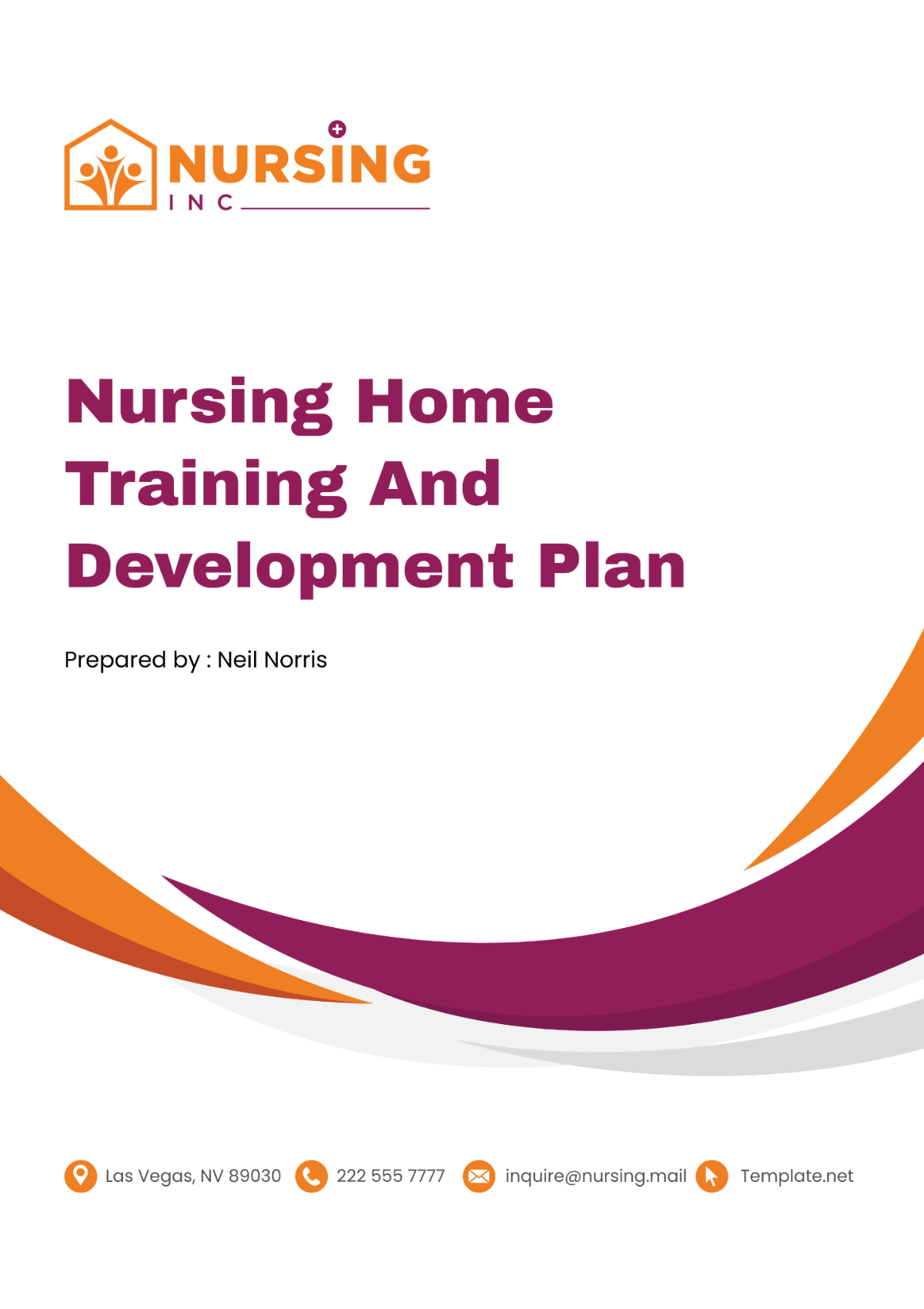
I. Introduction
Purpose of the Training and Development Plan
The Nursing Home Training and Development Plan aims to ensure that our staff members possess the requisite skills, knowledge, and competencies to deliver exceptional care to our residents. By investing in comprehensive training initiatives, we strive to uphold the highest standards of care and promote resident well-being.
Importance of Staff Training in Nursing Home Settings
In the dynamic and demanding environment of nursing homes, continuous staff training is essential for adapting to evolving resident needs, advancements in healthcare practices, and regulatory requirements. Well-trained staff members not only enhance the quality of care but also contribute to resident safety, satisfaction, and overall organizational success.
Overview of the Plan Structure
This plan provides a structured framework for identifying training needs, setting goals, designing curriculum, selecting delivery methods, allocating resources, and evaluating training outcomes. By following this plan, we ensure a systematic approach to staff development that aligns with our organizational objectives and values.
II. Needs Assessment
Staff Skill Gaps Analysis
Through surveys, performance evaluations, and direct observations, we assess the proficiency levels of our staff across various job roles and responsibilities. This analysis helps identify areas where additional training or skill enhancement is needed, such as clinical skills, communication, documentation, and teamwork.
Resident Needs Assessment
We gather feedback from residents, their families, and interdisciplinary care teams to understand their preferences, expectations, and areas of concern. This input informs our training priorities and ensures that our staff are equipped to address the diverse physical, emotional, and social needs of our residents effectively.
Regulatory Requirements and Compliance
We conduct regular reviews of state and federal regulations, industry standards, and accreditation requirements to ensure that our training initiatives align with current compliance expectations. By staying abreast of regulatory changes, we proactively integrate necessary updates into our training curriculum to maintain regulatory compliance and minimize risk.
III. Training Goals and Objectives
Improving Staff Competence
Our primary goal is to enhance the competence and confidence of our staff members in delivering person-centered care that promotes dignity, autonomy, and well-being for our residents. Through targeted training interventions, we aim to equip our staff with the knowledge, skills, and attitudes necessary to excel in their roles.
Enhancing Resident Satisfaction
By investing in staff training, we seek to improve the overall experience and satisfaction of our residents and their families. We recognize that well-trained staff members are better equipped to meet the individualized needs and preferences of our residents, resulting in improved quality of life and positive resident outcomes.
Promoting a Culture of Continuous Learning
We aspire to foster a culture of continuous learning and professional development among our staff members. By providing ongoing training opportunities, we empower our employees to stay updated on best practices, embrace innovation, and pursue personal and career growth within our organization.
IV. Training Curriculum
Core Competencies for Nursing Home Staff
Our training curriculum encompasses a broad range of core competencies essential for nursing home staff, including clinical skills, communication, teamwork, ethical decision-making, and resident-centered care. These competencies serve as the foundation for delivering high-quality care and fostering positive resident-staff interactions.
Curriculum Development Process
We employ a collaborative approach to curriculum development, involving subject matter experts, clinical educators, regulatory specialists, and frontline staff members. This process ensures that our training content is evidence-based, relevant to real-world practice, and aligned with organizational goals and values.
Training Topics and Modules
Our training modules cover a diverse array of topics relevant to nursing home care, including infection control, resident rights, dementia care, medication management, fall prevention, communication skills, and emergency preparedness. Each module is designed to address specific learning objectives and can be tailored to meet the unique needs of different staff roles and departments.
Incorporating Interactive and Hands-On Training Methods
We recognize the importance of engaging our staff in the learning process through interactive and hands-on training methods. Our training sessions incorporate role-playing exercises, case studies, group discussions, simulations, and practical demonstrations to enhance learning retention and application.
Integration of Technology and E-Learning Resources
To accommodate the diverse learning preferences and schedules of our staff members, we offer a variety of technology-enabled training options, including online courses, webinars, virtual simulations, and mobile learning apps. These e-learning resources provide flexible and convenient access to training content anytime, anywhere, allowing staff members to learn at their own pace.
V. Training Delivery Methods
Selection of Training Delivery Formats
We recognize that different staff members may have varying learning styles and preferences. Therefore, we offer a range of training delivery formats to accommodate diverse needs. These formats include:
In-Person Workshops and Seminars: Interactive sessions conducted by experienced facilitators, allowing for direct interaction, group activities, and hands-on learning.
Online Courses and Webinars: Self-paced modules accessible through our learning management system, offering flexibility for staff members to complete training at their convenience.
On-the-Job Training and Shadowing: Practical learning experiences facilitated by preceptors or mentors, providing opportunities for skill development in real-life caregiving scenarios.
Simulation Exercises and Case Studies: Immersive learning experiences that simulate common caregiving challenges and scenarios, allowing staff members to practice decision-making and problem-solving skills in a safe environment.
Tailoring Training Methods to Staff Learning Styles and Preferences
We recognize the importance of catering to individual learning styles and preferences to maximize the effectiveness of our training initiatives. Staff members have the flexibility to choose the training delivery methods that best suit their needs, ensuring engagement and participation.
Flexibility to Accommodate Shift Schedules and Staffing Needs
We understand that scheduling constraints and staffing availability may impact staff members' ability to participate in training sessions. Therefore, we offer flexibility in scheduling training sessions to accommodate different shift schedules, ensuring that all staff members have access to training opportunities without disrupting resident care.
Continuous Monitoring and Evaluation of Training Effectiveness
We continuously monitor the effectiveness of our training initiatives through various evaluation methods, including pre- and post-training assessments, participant feedback surveys, and performance reviews. This ongoing evaluation allows us to identify areas for improvement and make necessary adjustments to our training delivery methods to better meet the needs of our staff and residents.
Commitment to Continuous Improvement
We are committed to continuously improving our training delivery methods to ensure that they remain effective and relevant in meeting the evolving needs of our staff and residents. Through regular feedback solicitation, data analysis, and collaboration with stakeholders, we strive to refine our training approaches and enhance the overall learning experience for our staff members.
VI. Resource Allocation
Budget Planning for Training Initiatives
Effective training requires adequate financial resources to cover expenses such as staff development programs, training materials, external consultants, and technology infrastructure. We allocate a portion of our budget specifically for training initiatives, ensuring that we can invest in high-quality learning experiences for our staff.
Staffing and Time Allocation for Training Activities
We recognize the importance of allocating dedicated time for staff members to participate in training activities without compromising resident care. We work closely with department managers to schedule training sessions during non-peak hours and provide coverage to ensure that staffing levels remain sufficient to meet resident needs.
Procurement of Training Materials and Resources
We procure a variety of training materials and resources to support our training initiatives, including textbooks, manuals, instructional videos, and online learning modules. These resources are carefully selected to align with our training objectives and enhance the learning experience for our staff members.
Outsourcing Training Services or Consultants, if Necessary
In some cases, we may engage external training providers or consultants to deliver specialized training programs or facilitate specific learning experiences. These partnerships allow us to leverage the expertise of industry professionals and offer unique training opportunities that may not be available internally.
VII. Training Implementation
Schedule and Timeline for Training Sessions
We develop a comprehensive training schedule and timeline that outlines the dates, times, and locations of all training sessions. This schedule is communicated to staff members well in advance to allow for adequate planning and preparation.
Coordination with Staff Scheduling and Operations
We work closely with department managers to coordinate training sessions with staff scheduling and operational needs. This ensures that training activities can be seamlessly integrated into daily workflows without causing disruption to resident care or facility operations.
Preparing Training Facilities and Equipment
We ensure that training facilities are equipped with the necessary technology, audiovisual equipment, and learning materials to support effective training delivery. Additionally, we conduct regular maintenance and upgrades to ensure that training facilities remain conducive to learning.
Communication and Promotion of Training Opportunities
We use multiple communication channels, including email, newsletters, staff meetings, and bulletin boards, to promote upcoming training opportunities and encourage staff participation. We emphasize the importance of training and highlight the benefits of skill development for both individual staff members and the organization as a whole.
Providing Necessary Support and Accommodations for Staff Participation
We recognize that staff members may have individual needs or accommodations required to fully participate in training activities. We provide support, such as arranging for interpreters, providing accessibility accommodations, or offering flexible scheduling options, to ensure that all staff members can engage in training effectively.
VIII. Evaluation and Feedback
Methods for Assessing Training Effectiveness
We employ various methods to assess the effectiveness of our training initiatives and measure their impact on staff knowledge, skills, and performance. These methods include pre- and post-training assessments, participant feedback surveys, performance evaluations, and observations of staff behavior and practices.
Analysis of Training Outcomes and Impact on Resident Care
We analyze the data collected through our evaluation methods to identify trends, patterns, and areas for improvement in our training programs. By correlating training outcomes with resident care metrics such as patient satisfaction scores, medication error rates, and incidence of adverse events, we assess the direct impact of training on resident outcomes and quality of care.
Continuous Improvement Strategies Based on Evaluation Findings
Based on the insights gained from our evaluation efforts, we implement continuous improvement strategies to enhance the effectiveness and relevance of our training programs. This may include updating training content to reflect best practices, adjusting training delivery methods to better accommodate staff learning preferences, or targeting specific areas for additional training based on identified needs.
IX. Compliance and Regulatory Considerations
Ensuring Compliance with State and Federal Regulations
We maintain a thorough understanding of the regulatory requirements governing nursing home operations and ensure that our training programs align with these standards. This includes adherence to regulations related to staff training and competency assessment, such as those outlined by the Centers for Medicare & Medicaid Services (CMS) and state licensing agencies.
Documentation and Record-Keeping Requirements
We maintain detailed records of staff training activities, including attendance records, training materials, evaluations, and certifications. These records serve as evidence of compliance with regulatory requirements and provide documentation of staff members' ongoing professional development.
Training Documentation for Regulatory Audits and Inspections
In preparation for regulatory audits and inspections, we ensure that our training documentation is organized, up-to-date, and readily accessible. This includes maintaining comprehensive records of staff training activities and being prepared to provide documentation to regulatory agencies upon request.
X. Staff Recognition and Incentives
Recognizing Staff Achievements and Contributions to Training
We recognize and celebrate staff members who demonstrate excellence in training and contribute positively to the learning culture within our organization. This may include acknowledgment in staff meetings, recognition on bulletin boards or newsletters, or formal awards ceremonies.
Providing Incentives for Participation and Achievement
We offer incentives to encourage staff participation in training activities and motivate them to actively engage in skill development. Incentives may include rewards such as gift cards, extra paid time off, or opportunities for career advancement based on demonstrated proficiency and achievement.
Celebrating Training Milestones and Success Stories
We celebrate training milestones and success stories as a way to inspire and motivate our staff members. This may include highlighting individual or team accomplishments, sharing success stories in staff communications, or organizing special events to commemorate significant achievements in staff development.
XI. Ongoing Training and Professional Development
Establishing a Culture of Lifelong Learning
We are committed to fostering a culture of lifelong learning among our staff members, recognizing that ongoing training and professional development are essential for staying current in the field of nursing home care. Through regular communication, encouragement, and support, we encourage staff members to embrace learning as a continuous journey and invest in their personal and professional growth.
Opportunities for Continuing Education and Advanced Training
In addition to foundational training programs, we offer opportunities for staff members to pursue continuing education and advanced training in specialized areas of interest. These opportunities may include participation in conferences, workshops, seminars, and certification programs relevant to their roles and career aspirations.
Professional Development Plans for Individual Staff Members
We collaborate with staff members to develop individualized professional development plans tailored to their career goals and learning needs. These plans outline specific training objectives, timelines, and resources required to support staff members' growth and advancement within our organization.
XII. Conclusion
Summary of Key Points
The Nursing Home Training and Development Plan outlines our commitment to providing high-quality training and development opportunities for our staff members. By investing in staff training, we ensure that our team is well-equipped to deliver exceptional care to our residents and maintain compliance with regulatory standards.
Commitment to Continuous Improvement
We are dedicated to continuously evaluating and improving our training initiatives to better meet the evolving needs of our staff and residents. Through ongoing feedback, data analysis, and collaboration with stakeholders, we strive to enhance the effectiveness and relevance of our training programs.
Acknowledgment of Stakeholder Contributions
We extend our gratitude to all stakeholders who have contributed to the development and implementation of this Training and Development Plan, including staff members, residents, families, regulatory agencies, and external partners. Their input, support, and collaboration are invaluable in ensuring the success of our training initiatives.
Next Steps for Implementation and Monitoring
As we move forward with the implementation of this Training and Development Plan, we will closely monitor the progress of our training initiatives, evaluate their impact on staff performance and resident care, and make necessary adjustments to achieve our goals. By working together as a team, we will continue to strive for excellence in nursing home care and uphold the highest standards of quality and professionalism.
- 100% Customizable, free editor
- Access 1 Million+ Templates, photo’s & graphics
- Download or share as a template
- Click and replace photos, graphics, text, backgrounds
- Resize, crop, AI write & more
- Access advanced editor
Streamline your nursing home staff training with the Nursing Home Training And Development Plan Template from Template.net. This editable and customizable template comes with an AI Editor Tool, allowing you to tailor the plan to your facility's unique needs. Enhance staff competence, ensure compliance, and elevate resident care seamlessly with this comprehensive template.
